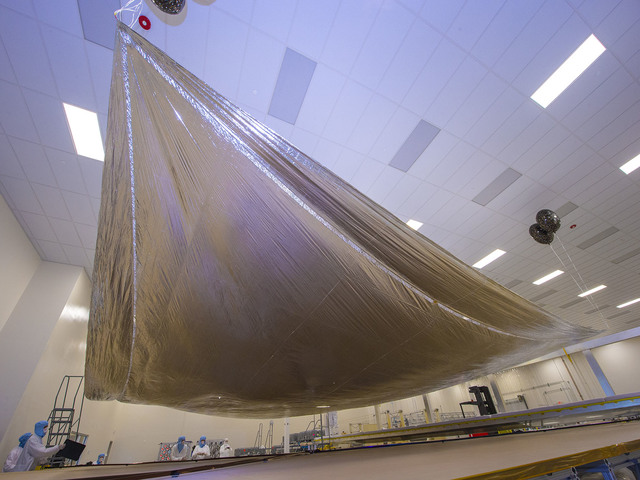National Aeronautics and Space Administration (NASA) has announced that its new spacecraft NEA Scout (Near-Earth Asteroid Scout) has undergone all required tests and has been placed inside the Space Launch System (SLS) rocket.
NEA Scout will be flying to space on Artemis I, which will be the first uncrewed test flight of the SLS rocket and the Orion spacecraft. Artemis I is scheduled to be launched in November 2021.
What is NEA Scout?
•NEA Scout (Near-Earth Asteroid Scout) also known as CubeSat, is a mini spacecraft developed under NASA’s Advanced Exploration Systems Program.
•NASA’s Jet Propulsion Laboratory in Pasadena, California, and NASA’s Marshall Space Flight Center in Huntsville, Alabama have designed and developed the NEA Scout.
•NASA has selected NEA Scout as the secondary payload on Artemis I, the first uncrewed flight test of the SLS rocket and the Orion spacecraft.
•NEA Scout is the size of a shoebox, that will be propelled by a solar sail measuring 925 sq ft. The camera fitted on the spacecraft will take pictures to help in determining the physical properties of a near-Earth asteroid.
•NEA Scout combined with solar sail propulsion will be the first interplanetary CubeSat to characterize and image a near-Earth asteroid.
What is Solar Sail?

•A very thin aluminized polymer sail measuring 925 sq ft atop the NEA Scout will propel it using the sunlight to generate thrust by reflecting solar photons.
•Sailing using sunlight is highly efficient at propelling space vehicles indefinitely into space while achieving remarkable speed.
What will NEA Scout do?
•Understanding near-Earth asteroids is very crucial as they are highly dangerous to Earth. In the past decade, there has been a rise in the number of near-Earth asteroids detected.
•NEA Scout using a science-grade camera will aid in obtaining data to close Strategic Knowledge Gaps (SKGs) and develop effective strategies to reducing the potential risk of an asteroid impact, improve the operations and designs of robotic and human space exploration missions.
•NEA Scout will capture data relating to the physical properties of a near-Earth asteroid such as its volume and shape, local debris, rotational properties, dust field, orbit, and surface makeup.
•The data gathered by the NEA Scout will aid in expanding knowledge about a small asteroids class, those measuring less than 330 feet. These have never been explored before.
How will NEA Scout work?
•NEA Scout aboard Artemis I will deploy from the SLS rocket after the Orion spacecraft gets separated from the upper stage. After reaching the lunar vicinity, the Scout will conduct an image for instrument calibration.
•Initially, cold gas thrusters will propel the Scout into the right trajectory. Thereafter, the Solar Sail will propel the spacecraft into the targeted asteroid. The Scout will reach the targeted asteroid in two years.
•After reaching the target asteroid, the Scout will capture images ranging from 50 to 10 cm/pixels. The Scout will process the images to reduce file load and speed up the downlinking time to Earth. Scientists on Earth will study the images to understand the target asteroid.
•NEA Scout will be approximately 93 million miles from Earth when performing the mission.

